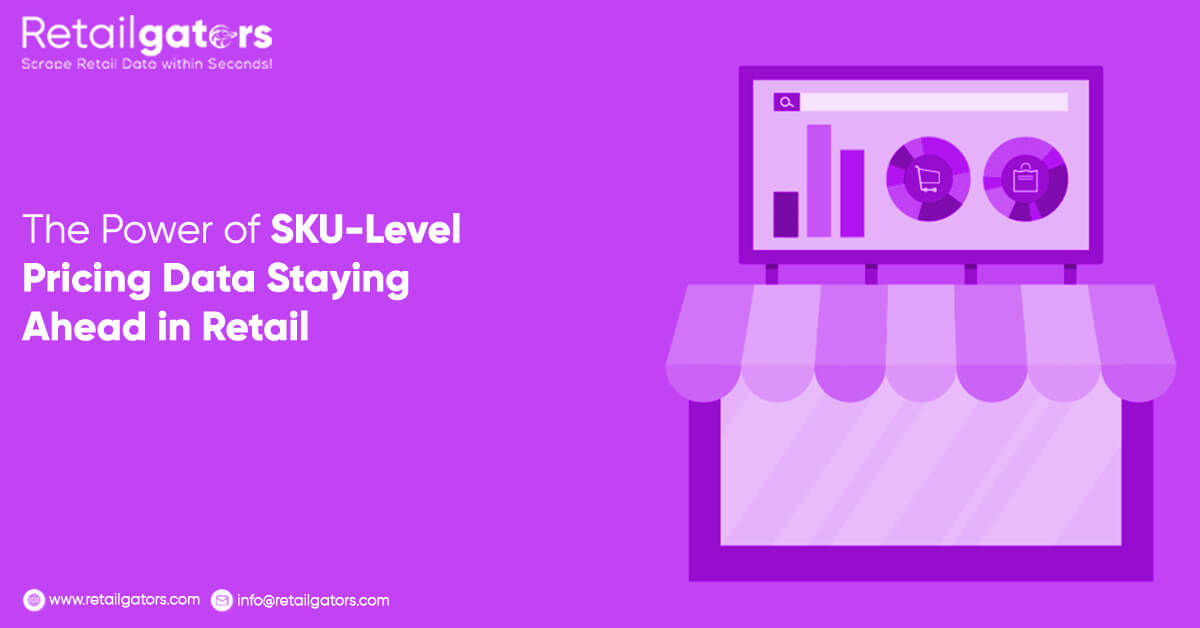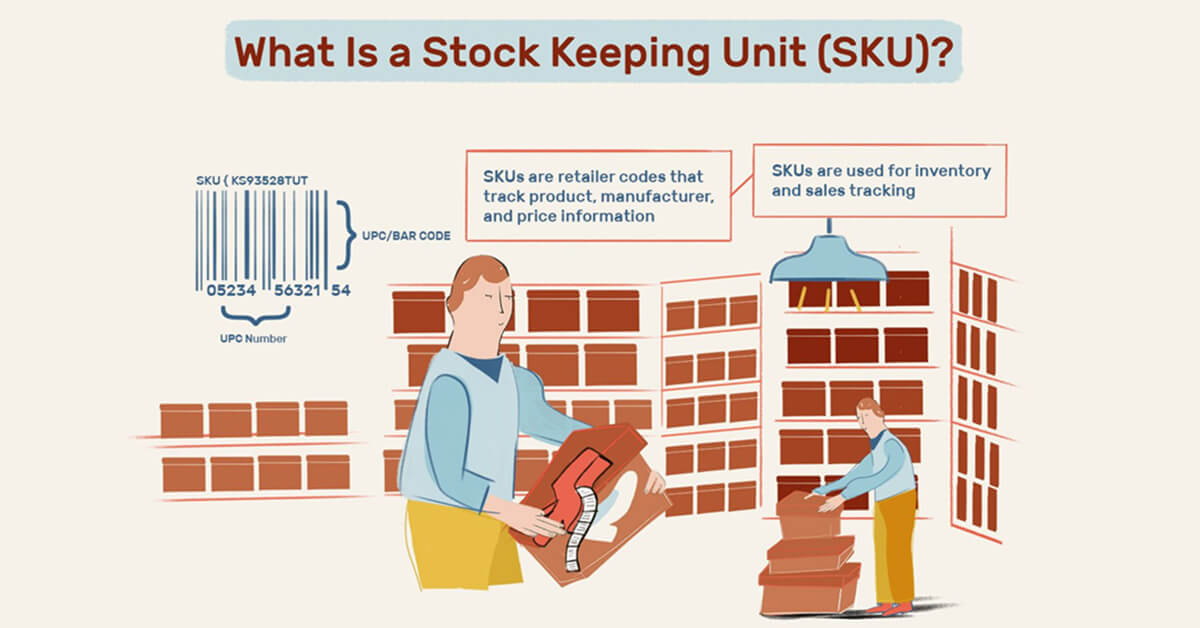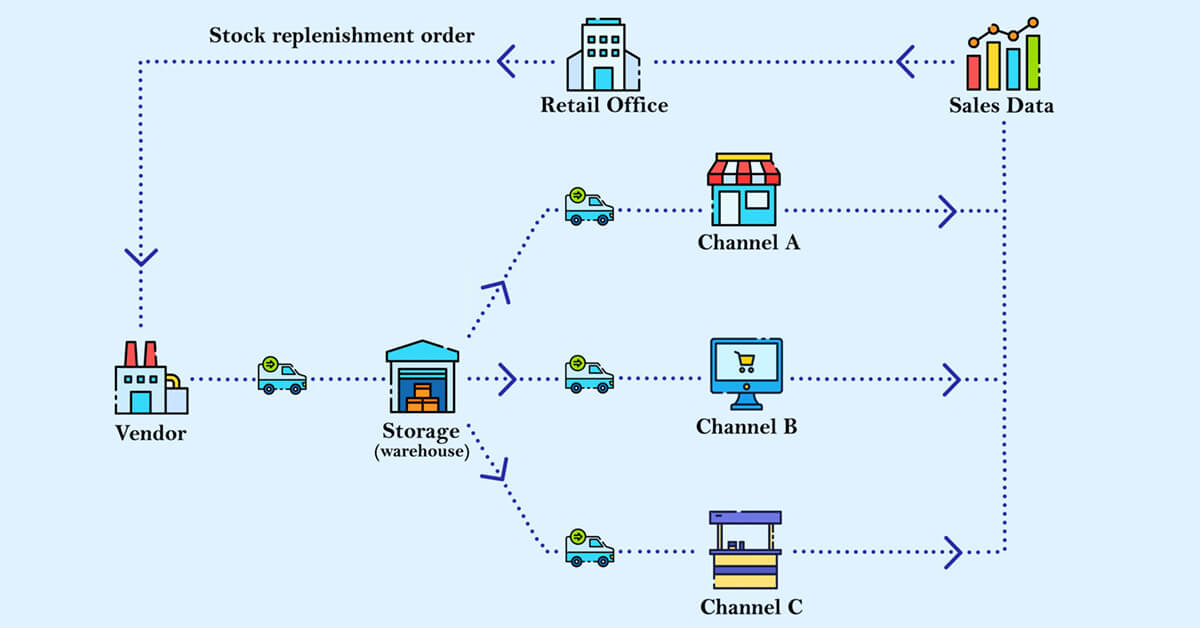
How Retailers Can Stay Ahead of the Game with SKU-Level Pricing Data
Retailers operate in a highly competitive market, and the key to success is offering products at the right price. Retailers that know how to price competitively can beat the competition and generate higher profits; retailers that do not are sure to get left in the dust.
But how do you determine an appropriate pricing strategy? This blog post will show you how SKU-level pricing data can be used to gain a competitive edge by getting insight into your competitors' pricing strategies. For example, suppose your competitor is selling one particular product for $10 above your retail price. In that case, it might be worth lowering yours not to give them a more significant margin than they deserve.
Explanation of SKU-level pricing data:
"SKU-level" means that the retailer has identified each product in the store and knows the specific price charged by each SKU.
The SKU is a unique identifier for a particular product. It is often represented as the first letter of every word in its name (A, B, etc.) and can also appear on a sticker placed on the product. The SKU should also appear on any information about the product, such as an invoice or packing slip.
Importance of SKU Based Pricing Data for retailers:

Retailers use SKU-level price data in different ways. Understanding your competitor’s pricing strategy can help you make better pricing decisions for yourself and your customers
A challenge of collecting this information is that you need your employees to manually enter each item's SKU into a spreadsheet (or some other platform) after it has been scanned or entered into inventory. The time and effort required to do this mean that only retailers with significant SKU-level price data have full access to the information.
The most effective use of SKU-level price data is matching your SKUs to your competitors, allowing you to see their pricing strategy and make strategic decisions based on the information.
How can retailers use competitor pricing data?
Knowing your competitor’s prices gives you insight into the costs they think will appeal to customers. If a significant competitor’s item has a higher price than yours, it might be worth lowering yours not just to be less expensive but also to give them a smaller margin than they deserve.
1. It's important to understand the competitive dynamics of your industry to figure out what your rivals' plan is.
Many variables go into pricing decisions – competition, seasonality, demand, and other factors influencing whether you should raise or lower prices. If you have good information about the competitive situation in your industry, it is easier for you to make the right decision on pricing.
2. The information is helpful for retailers who regularly price competitively—rather than mistake aggressive with cheap because they can't find data on their competitors' pricing strategies.
Just because you don't have a competitor's SKU-level price data doesn't mean you can’t be aggressive. Knowing your competitor's prices makes it easier to react and adjust your own without getting too aggressive (and looking cheap).
3. Knowing your competitors' pricing strategy helps you accurately price your items and make smarter decisions about new products.
If you know their prices, it is easier for you to adjust on the fly during the season & avoid putting out products that are likely outdated when they hit retail shelves.
4. It aids in testing price elasticity for new items by allowing you to test multiple prices at the SKU level.
It’s essential to understand how customers react to price changes at the SKU level because customers have different price sensitivities depending on what they buy. Suppose you don’t know how your competitor's prices will affect how much customers will buy based on individual items. Leveraging ServiceNow Consulting can help retailers streamline pricing strategies and maximize these growth opportunities.
5. You can use competitor pricing data to determine which products to test with special offers or price adjustments and how often those discounts or price changes need to occur.
As you better understand your competitor's pricing strategy, offering promotions, special offers, and other incentives that will encourage customers to buy more becomes easier.
6. You can use competitor pricing data to increase sales by offering different prices on different items in the store.
If you know your competitor's prices on items your store sells, you can offer more items at lower prices than they do, thus increasing sales.
What do retailers need to know before they gather SKU-level price data?

Before collecting SKU level data, you must ensure it will give you the information you want. Do not just assume that because your competitors have it, yours should also.
1. Know what is essential for your business:
The information will be more valuable for some retailers depending on the industry and vertical. Retailers, rather than margin management, will find it more useful.
2. Understand your goals:
Understanding whether you want to use the data to grow sales, increase profit, or both is essential. If you want to know your competitors' prices so that you can match them and avoid looking cheap, then this information won't be precious for you. However, you want to gain insight into their pricing strategy to decide what items should have higher or lower prices and when to raise or lower them. In that case, this data will give you a competitive edge.
3. Have good data:
You need to have good records of SKU pricing data, including the date and time it goes into your system, the source of the SKU, and who entered it. It's also important to know how long you have had the data because some retailers may have lost or changed their pricing systems since they started collecting SKU level data.
4. Don't forget about seasonal changes:
Retailers that are concerned with seasonality take into account these factors when they gather SKU-level price information. They will want to know whether their competitors' prices tend to be higher in lower volume times of the year, such as summertime sales or around holidays like Christmas and birthdays.
5. Understand your competitors' pricing standards:
If you work on the higher end of the market, gathering data on your competitors' price points versus your average customers might be more critical. Regardless of how good these data are, knowing what they are and look like is essential. Sometimes they may have a different way of measuring prices or different thresholds for price changes, like whether there should be a large or small difference between changes
6. It may not be enough:
While you may get pricing data on most big competitors, some may not have updated their pricing or might have changed their system, which would mean that their data would not match up properly. It is why it is essential also to have a benchmark for yourself.
7. Different SKUs and different strategies:
Sometimes data is helpful to see how competitors match their strategy over time. For example, a retailer may charge more for a smaller, more expensive item than other items on sale because they expect customers to like it more.
Conclusion:
You have a lot of choices in retail as a customer and as a business owner. The challenge is to stay at the top, which always comes down to how much you know about the market. If you want to be out there on top, you need to be aware of all the information you can get. SKU-level pricing is one way to gather that information and help you change pricing strategies. Ultimately, it's about something other than being the cheapest because cheaper only sometimes means valuable. What's important is to be perceived as the best and smartest in your category, and to achieve that, you need to have this kind of data.








Leave a Reply
Your email address will not be published. Required fields are marked